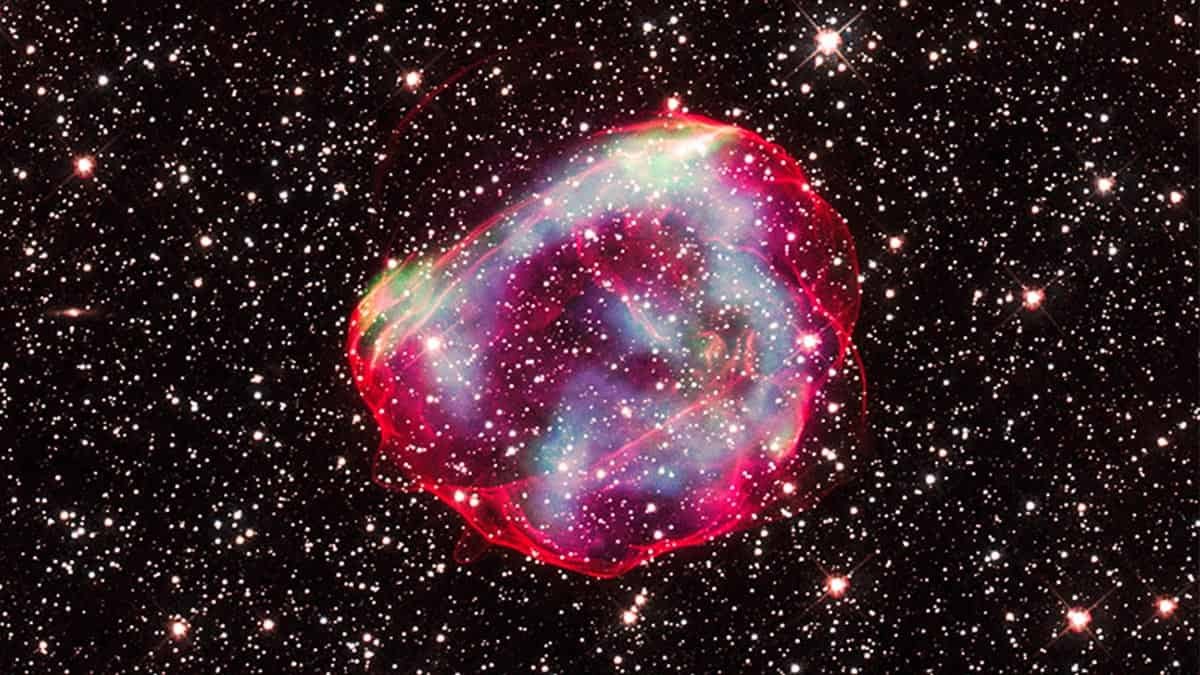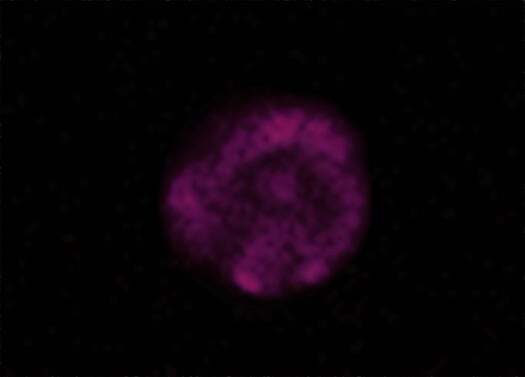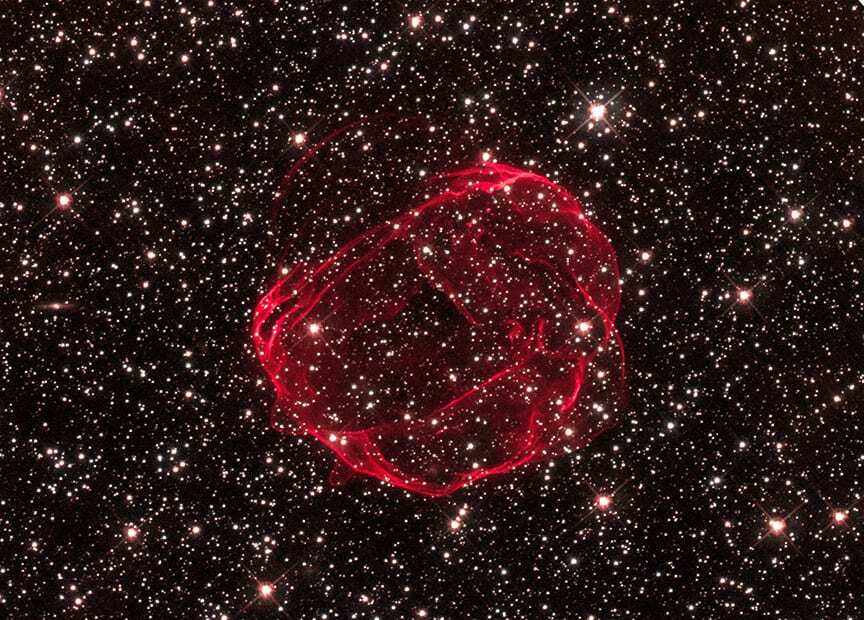16.09.2022
People in the Middle Ages might have watched the star explode.

A new image of SNR 0519-69.0 shows the debris of a star that exploded several hundred years ago. Credit: X-ray: NASA/CXC/GSFC/B. J. Williams et al.; Optical: NASA/ESA/STScI
By studying the spectacular remains of a supernova in a neighbouring galaxy, a team of astronomers have found enough clues to help wind back the clock – giving us a timeline on a star’s demise.
The supernova remnant SNR 0519-69.0 is located approximately 160 000 light-years from Earth in the southern constellation of Dorado.
The remnant is the debris from an explosion of a white dwarf star. After the star reached critical mass, either by pulling matter from a companion star or merging with another white dwarf, it underwent a thermonuclear explosion and was destroyed.
What we can see in the image above is the leftovers. This composite image shows X-ray data from the Chandra X-ray Observatory and optical data from Hubble.

Chandra data showing just the high energy X-rays (3-6keV). Credit: NASA/CXC/GSFC/B. J. Williams et al.
What’s really cool about this is that the Chandra team has given us access to the separate parts of the composite image. X-rays with low, medium, and high energies are shown in separate colours – green, blue, and purple respectively. Optical data shows the perimeter of the remnant in red and stars around the remnant. The image itself is around 88 light-years across.
In a paper published in The Astrophysical Journal researchers combined data from Chandra and Hubble with data from NASA’s retired Spitzer Space telescope, to determine how long ago the star exploded and learn about the environment around the supernova.
This data provides scientists a chance to “rewind” the stellar evolution that has played out since.
The researchers compared Hubble images from 2010, 2011, and 2020 to measure the speeds of material in the blast wave from the explosion, which range from about 6 million to 9 million kilometres per hour.

Hubble data showing just the optical image of SNR 0519-69.0. Credit: NASA/ESA/STScI
If the speed was toward the upper end of that estimate, the astronomers determined that light from the explosion would have reached Earth about 670 years ago, or during the Hundred Years’ War between England and France.
However, the evidence shows it’s likely that the material has slowed down since the initial explosion and that the explosion happened more recently.
More research will need to be done to determine an exact timeframe.
Quelle: COSMOS
